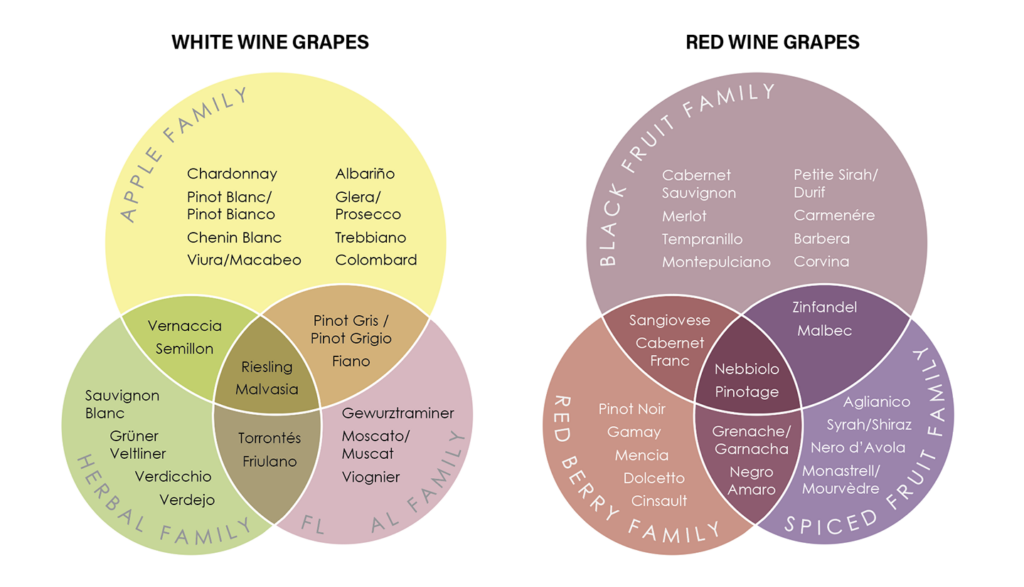Every grape used for making fine wine has its own unique flavor profile, but the more wines you taste, the easier it becomes to discern that these fruit fall into just a handful of overlapping “families” of flavor.
Most white wine varieties share a broad apple-pear flavor profile, as with chardonnay and pinot blanc. However, a few stand out with aromatics that are either unusually herbal and leafy, like sauvignon blanc, or uncommonly floral, like moscato. Others, like riesling and pinot gris, may combine elements of more than one family as shown below, though their flavor intensity may depend on degree of ripeness.
Red grapes are harder to categorize, since winemaking variables play a larger role on top of ripeness.
Many of the most popular, like cabernet sauvignon and malbec, smell and taste of the darkest black fruit, say blackberries or blueberries. A smaller number that makes paler wines, like pinot noir and sangiovese, taste like brighter red berries, such as strawberry or cranberry. Others feature an unusual concentration of additional scents, like black pepper and star anise, as with syrah or grenache, particularly when fully ripe. It’s helpful to think of these as being members of a separate “spiced fruit” family that can overlap with the others.
The Magic of Biochemistry
In the wine trade, grape varieties have traditionally been organized according to their native region or parentage, but flavor resemblances are more often driven by biochemistry.
In white wine grapes, floral grapes tend to be high in aromatic esters and terpenes, while herbal grapes more often contain pyrazines.
In red wine grapes, the black fruit/red fruit divide is often driven as much by the grape’s skin thickness as by specific flavor compounds, while a spiced fruit character derives from a wide variety of aromatic molecules, including esters, aldehydes, terpenes and ketones.

Feature photo by Evie Fjord on Unsplash.
Marnie Old is one of the country’s leading wine educators. Formerly the director of wine studies for Manhattan’s French Culinary Institute, she is best known for her visually engaging books published by DK such as Wine: A Tasting Course. Marnie currently serves as director of vinlightenment for Boisset Collection. Read her recent piece, Why Are There Crystals in My Wine?




